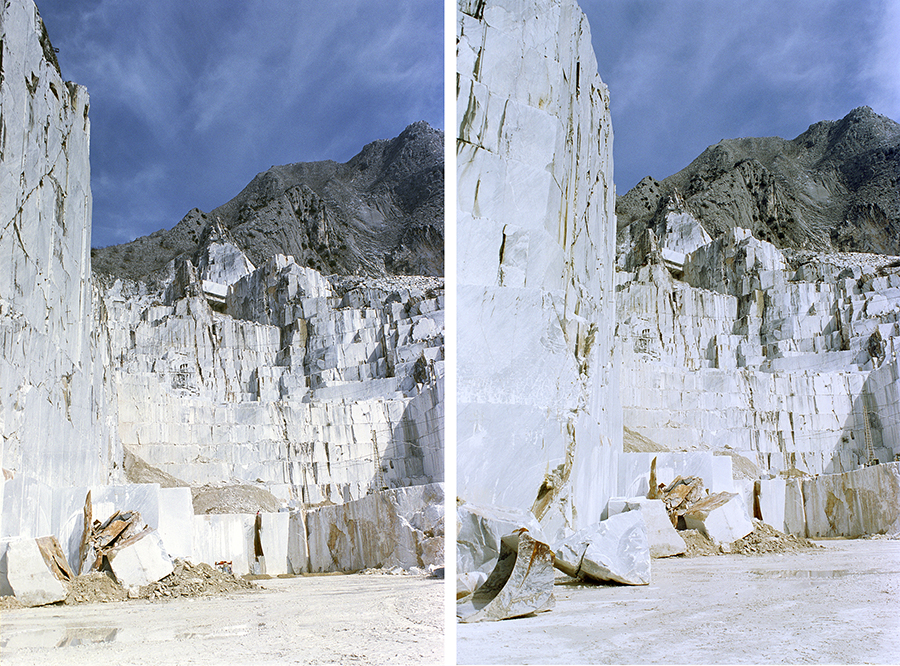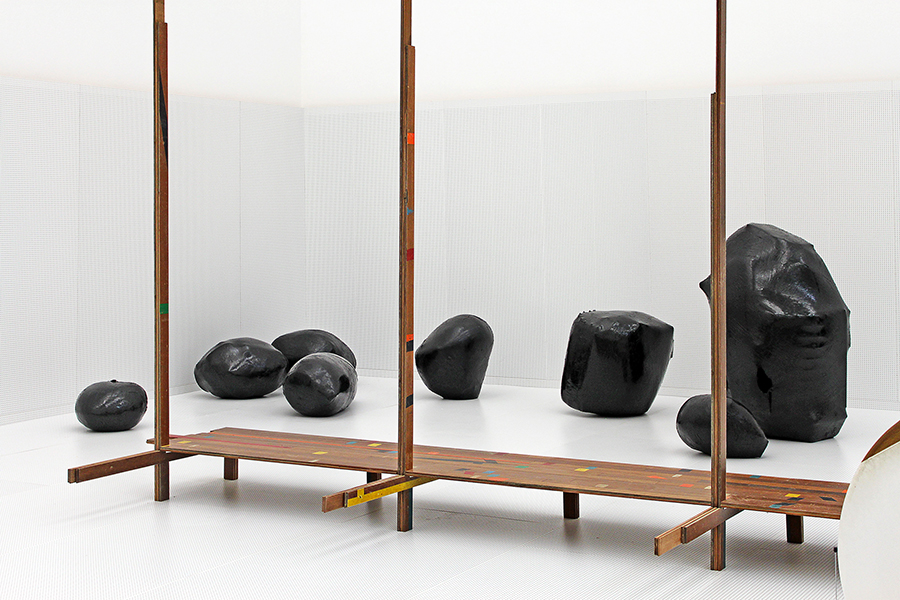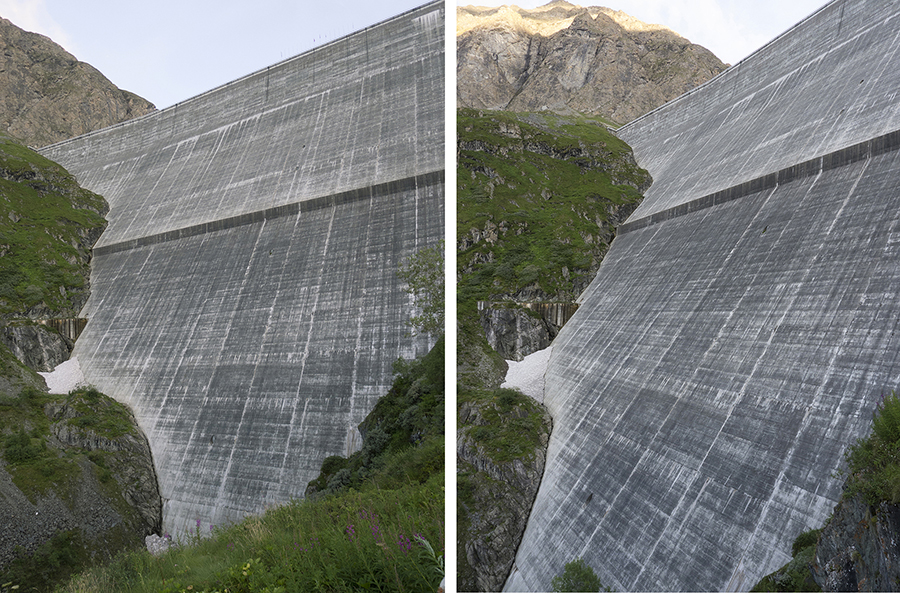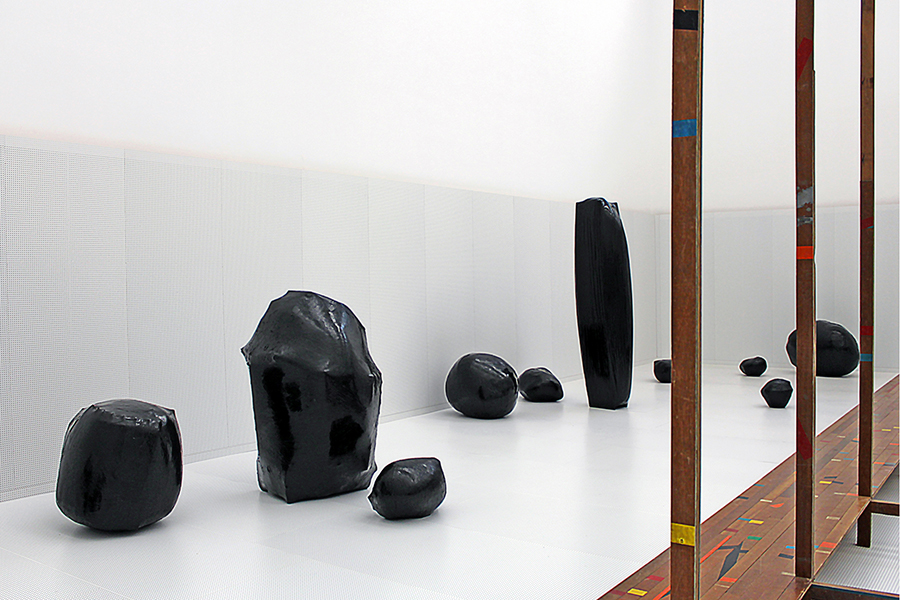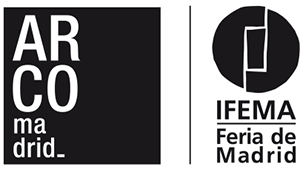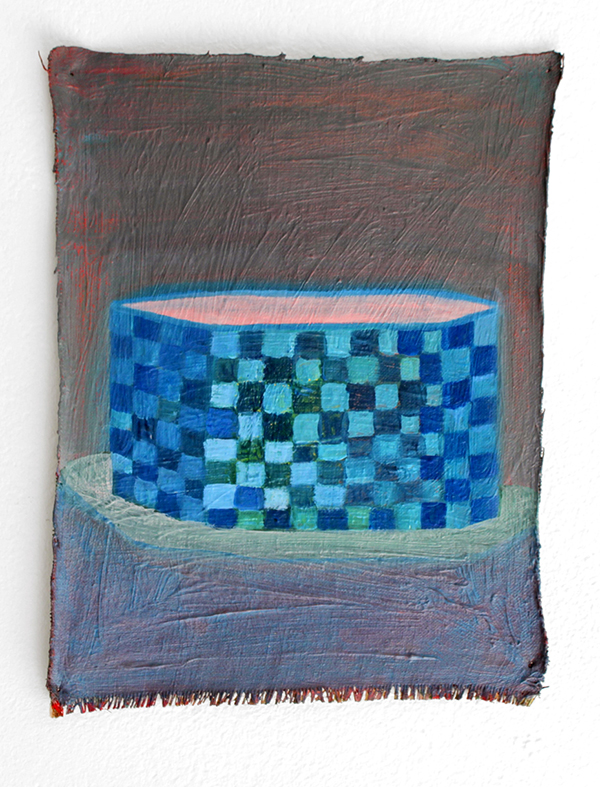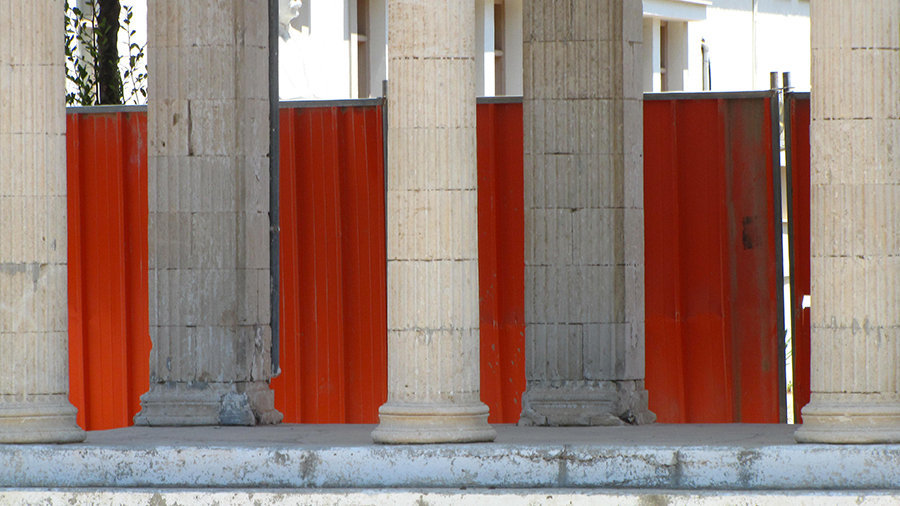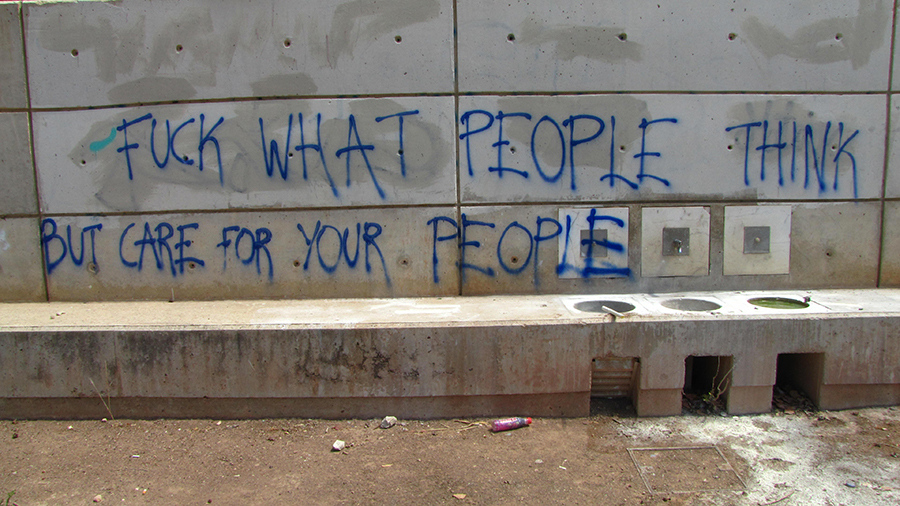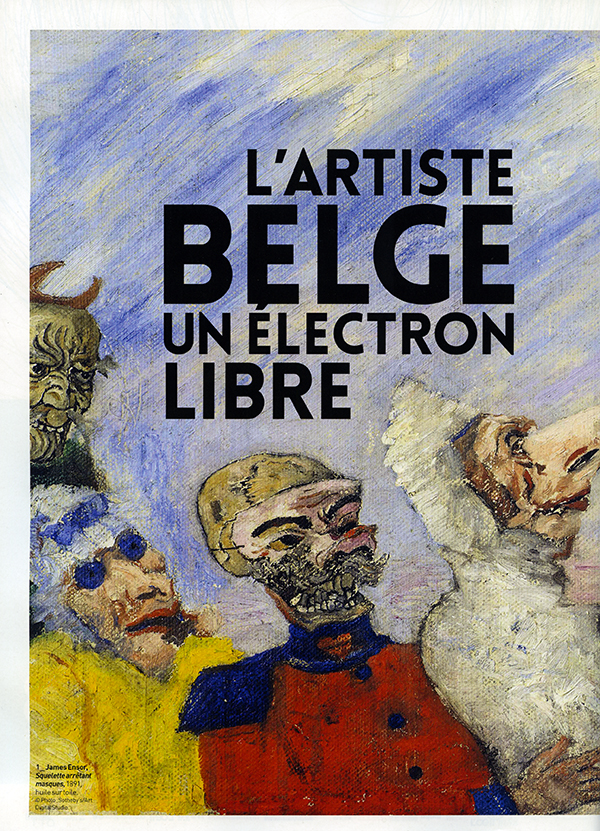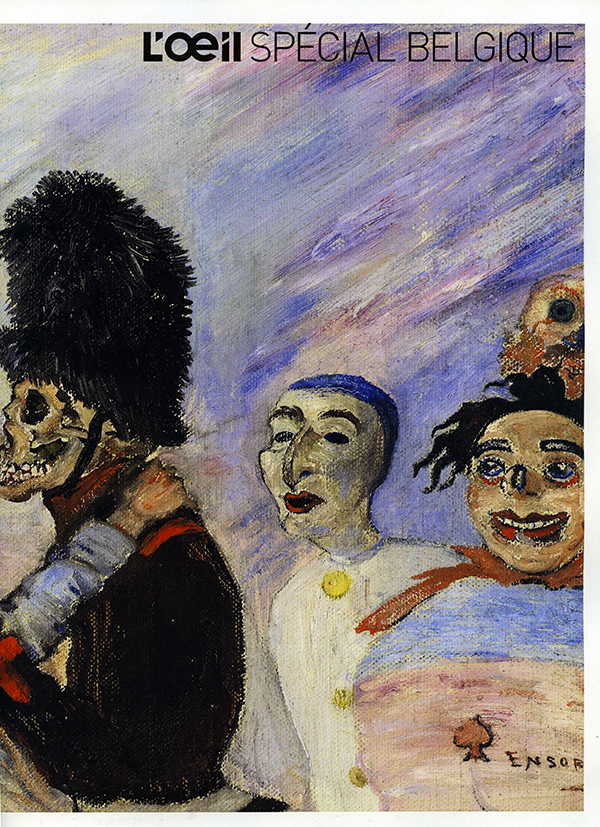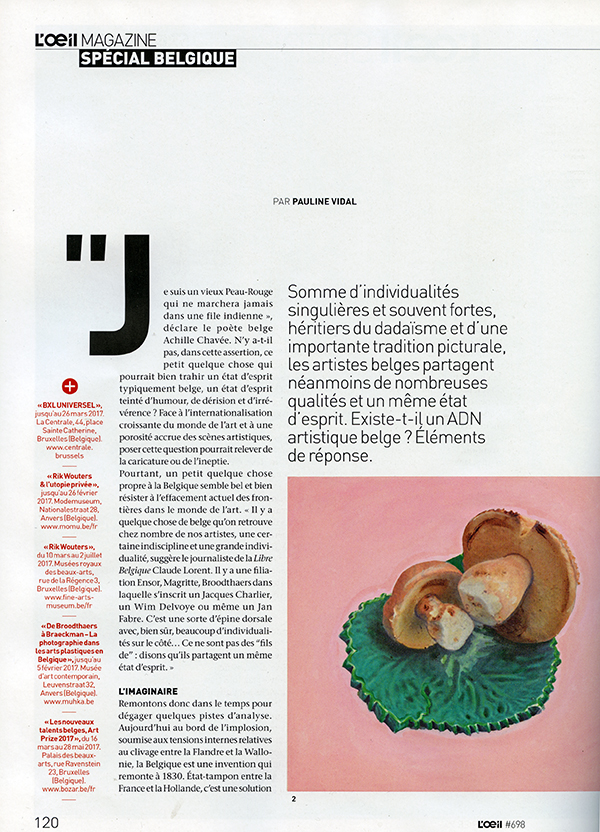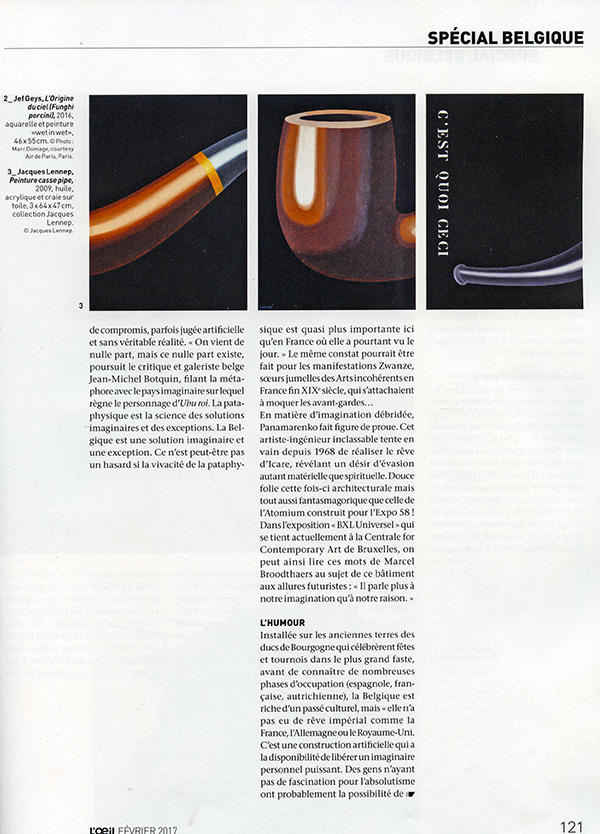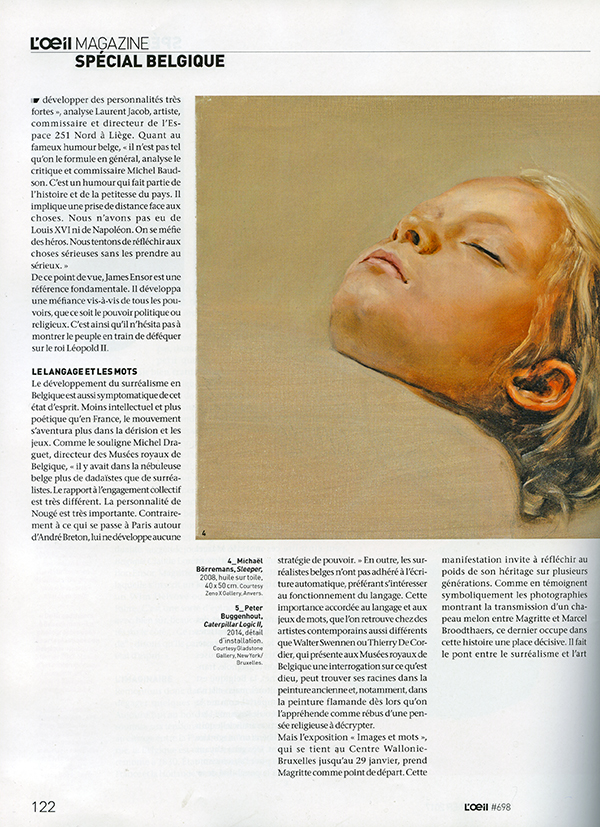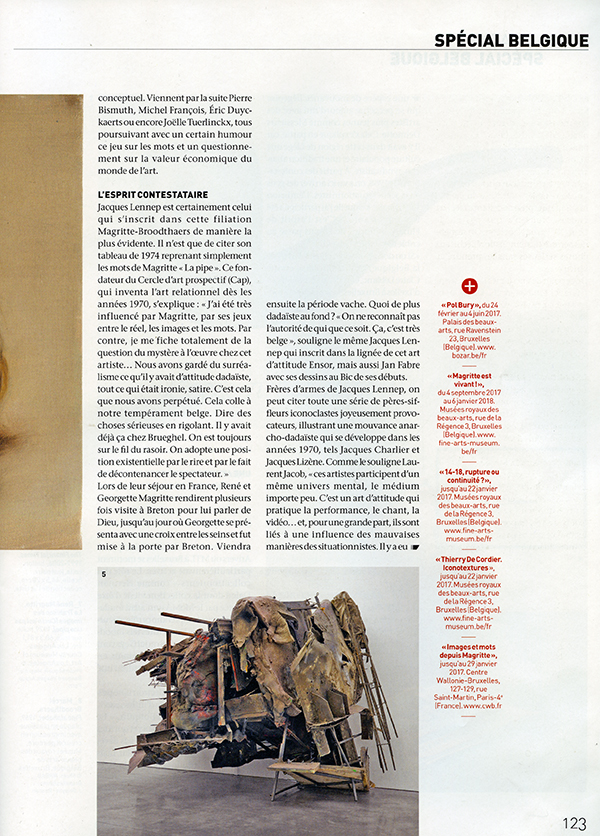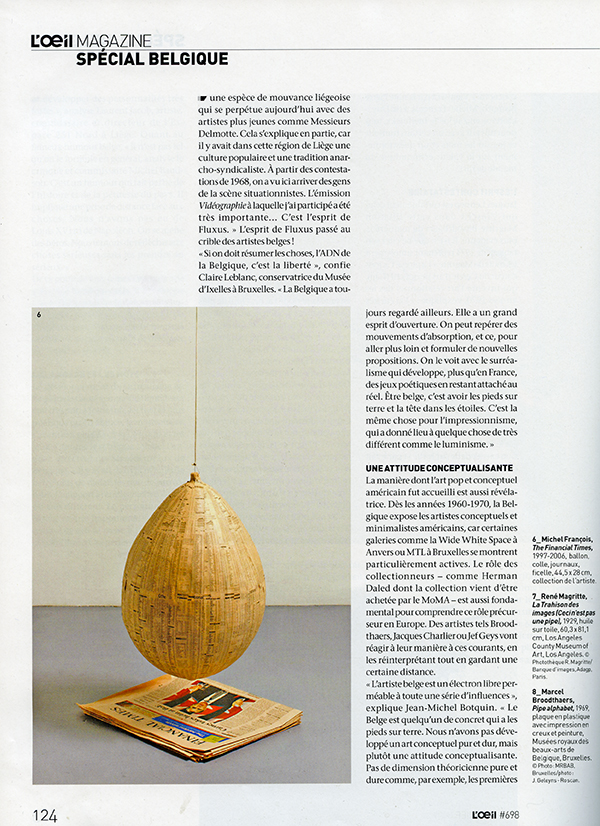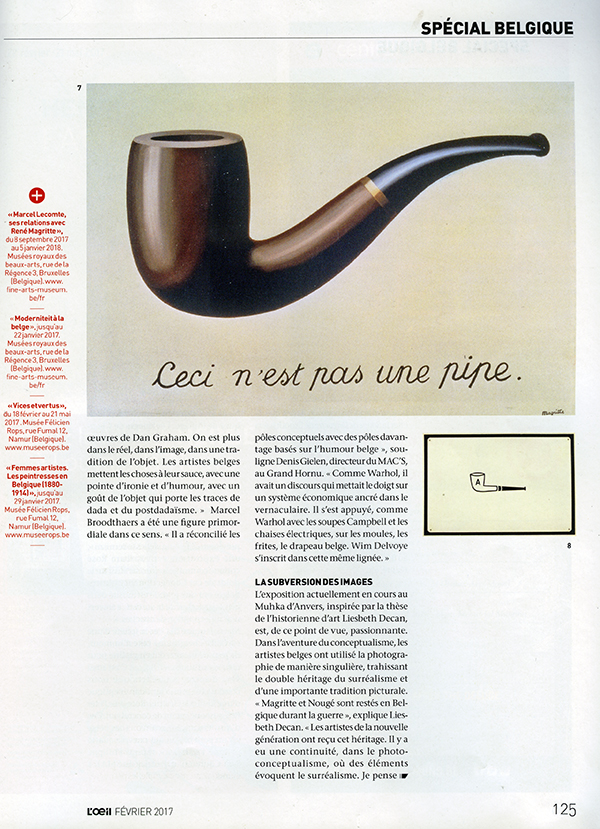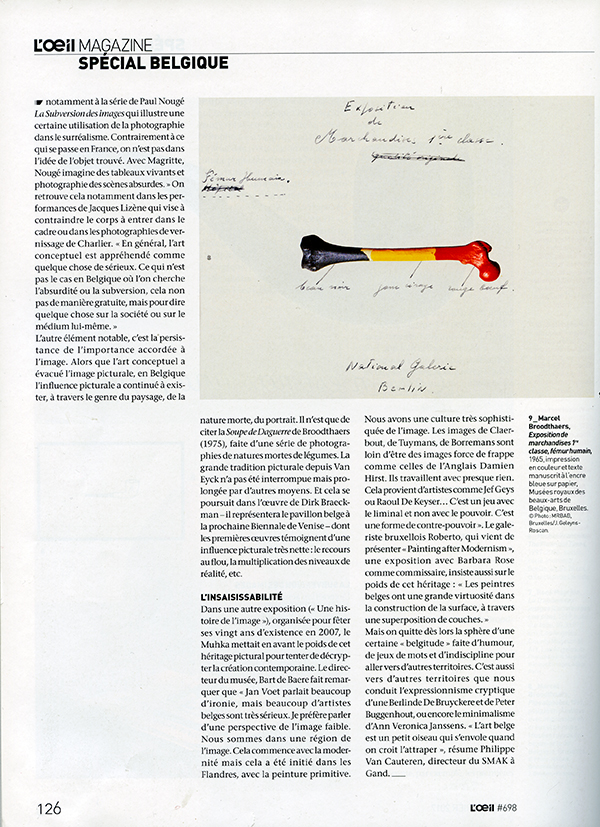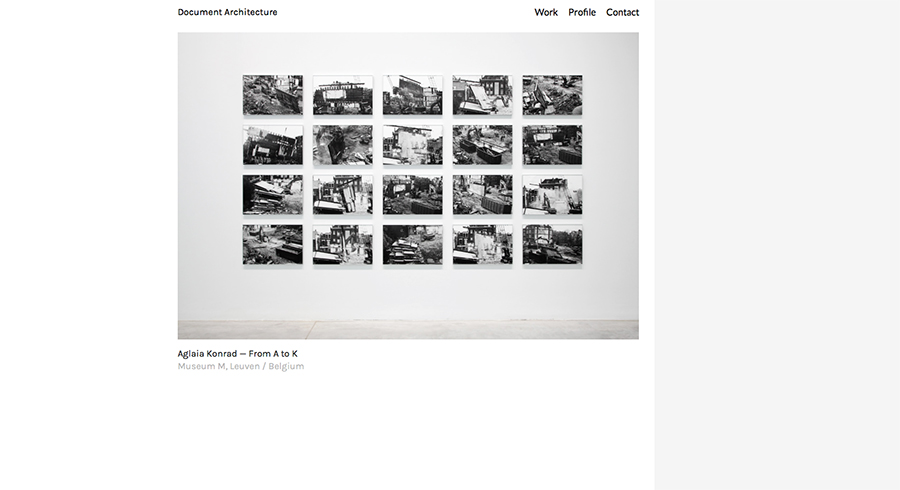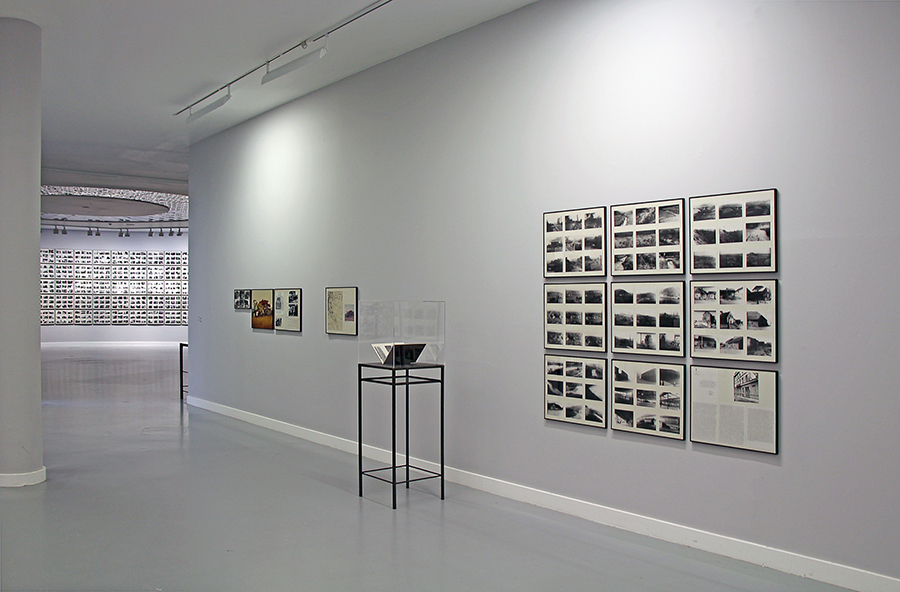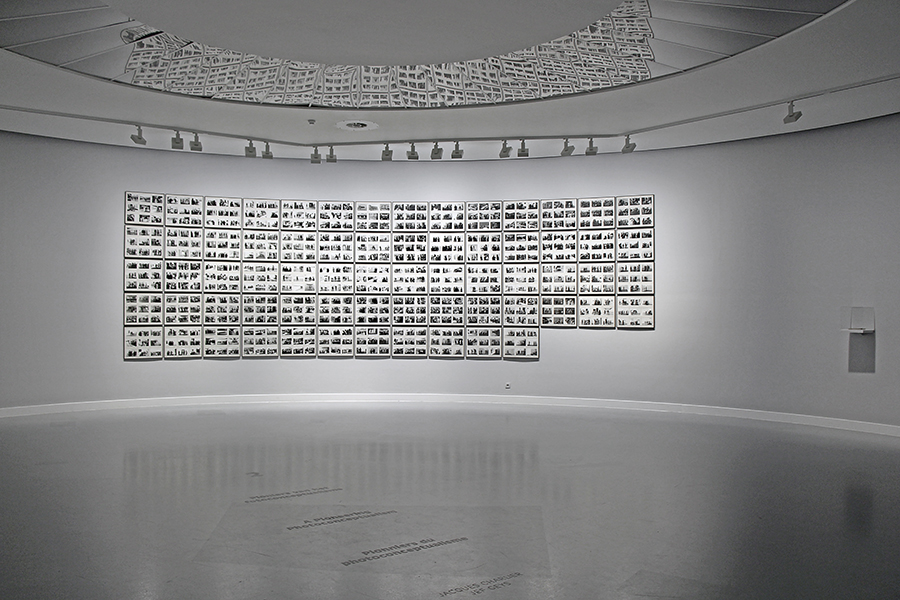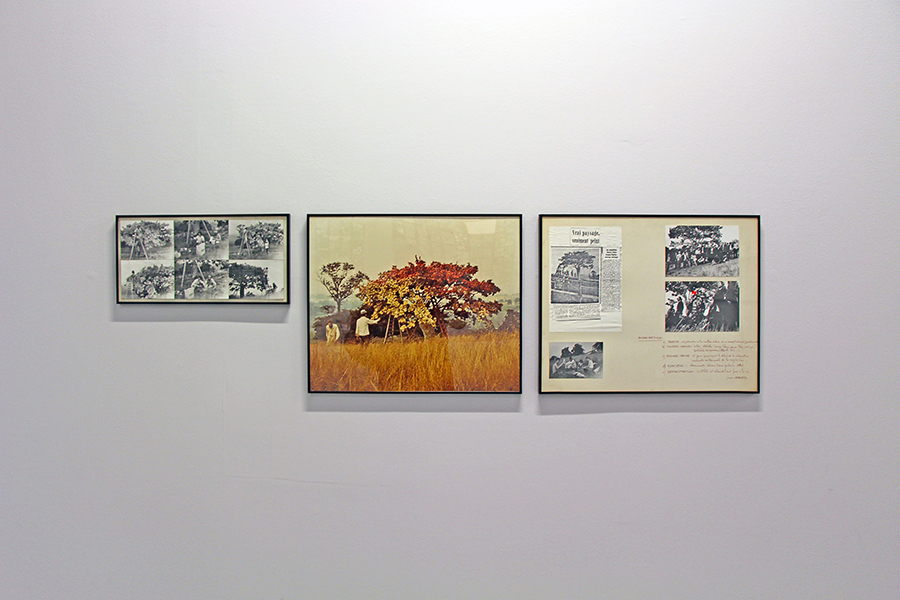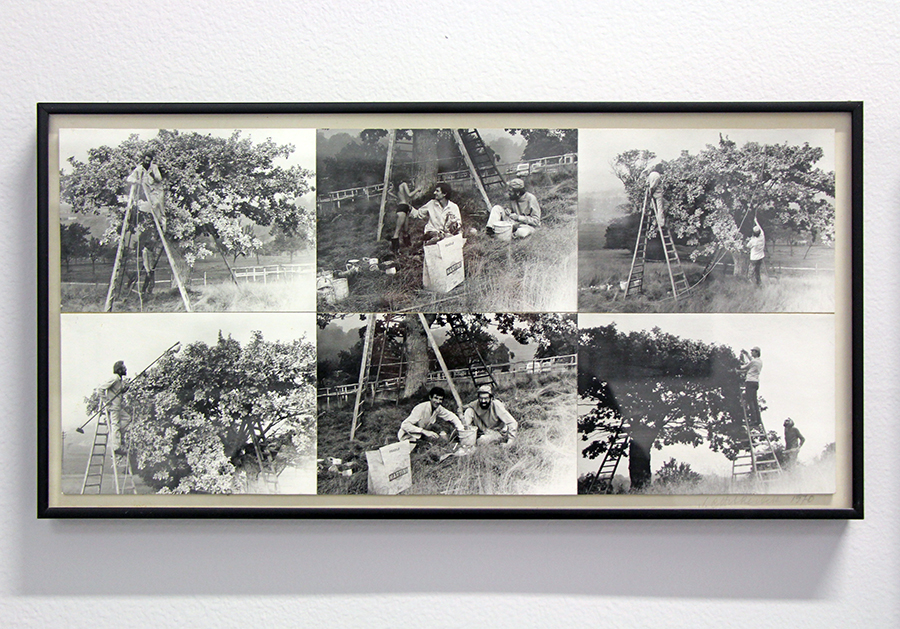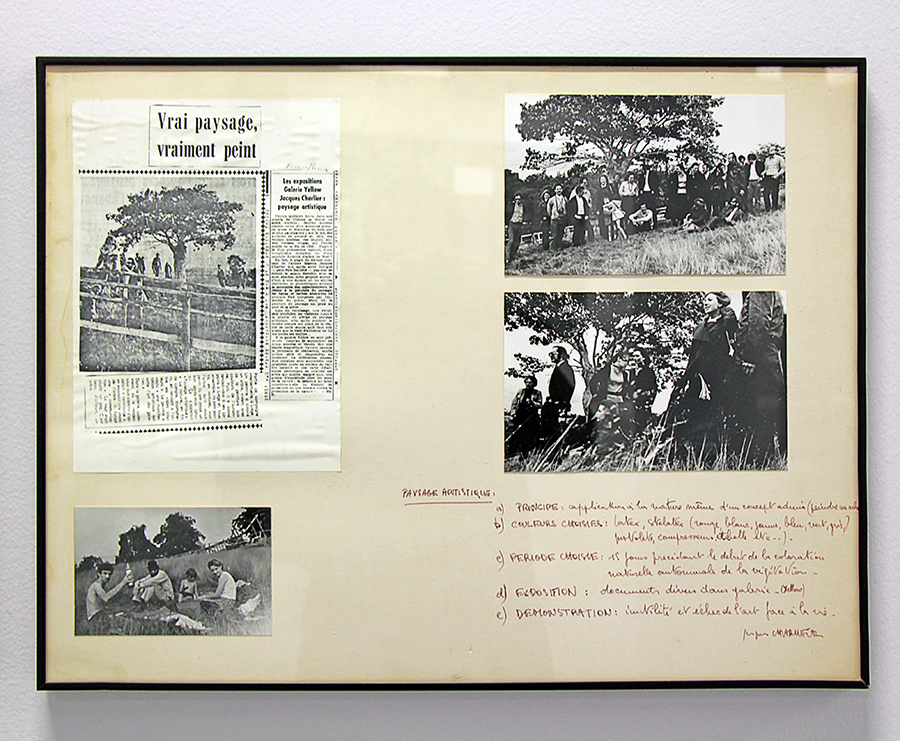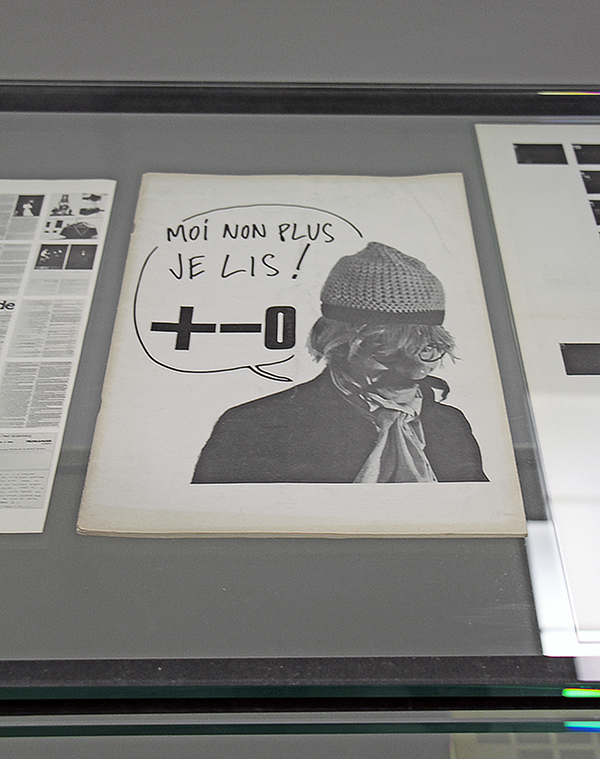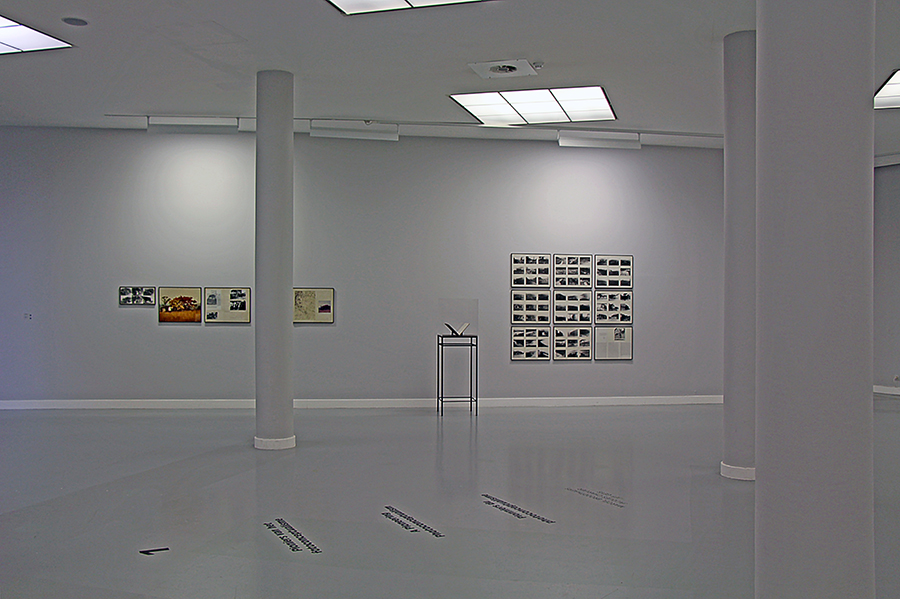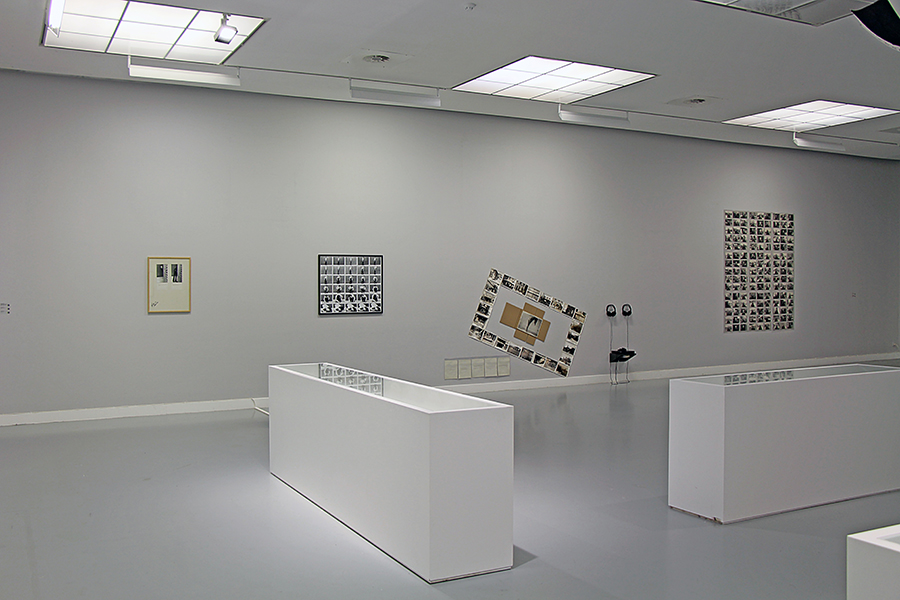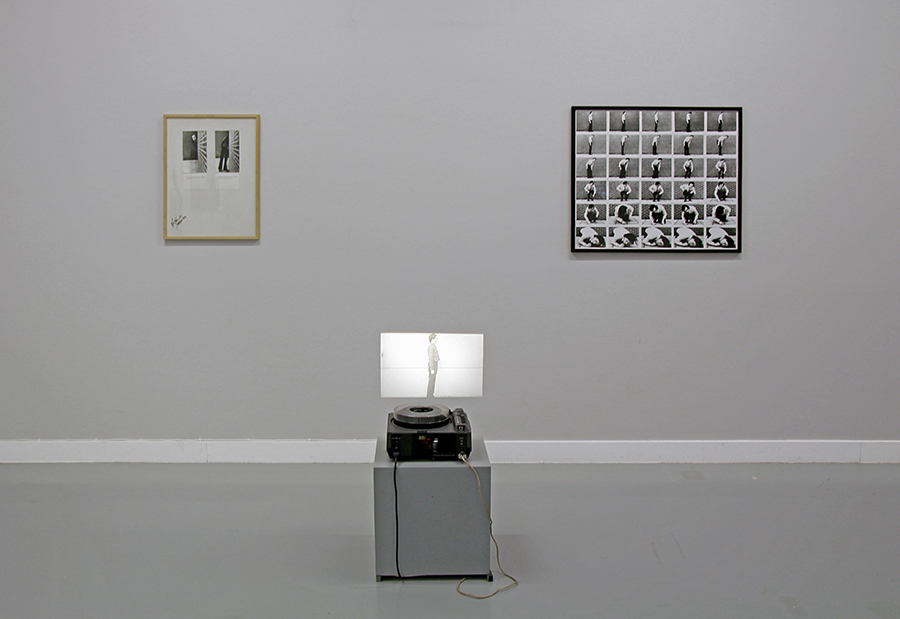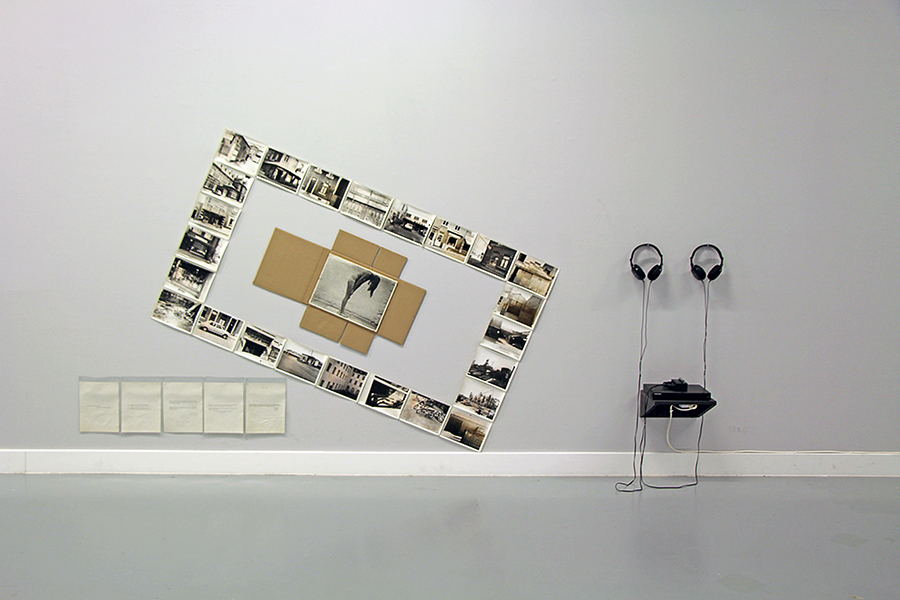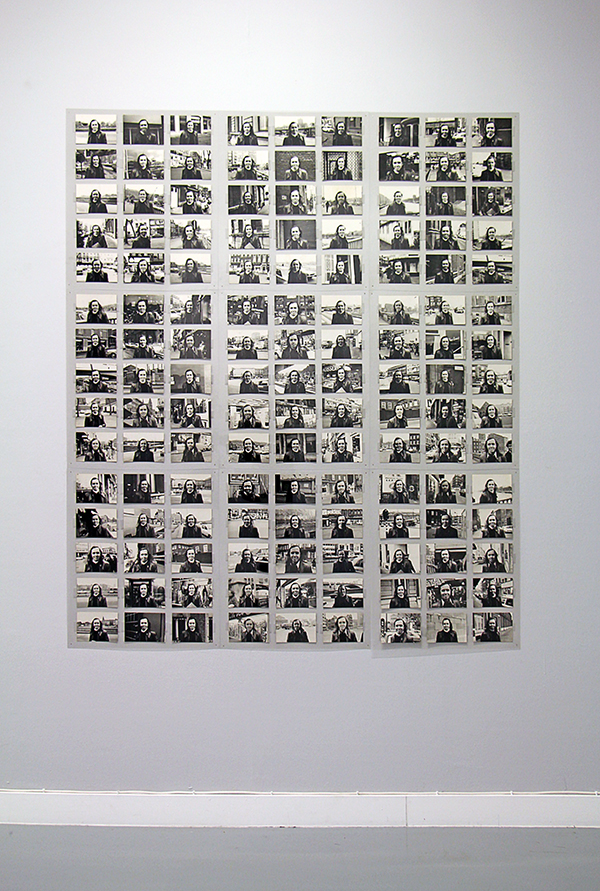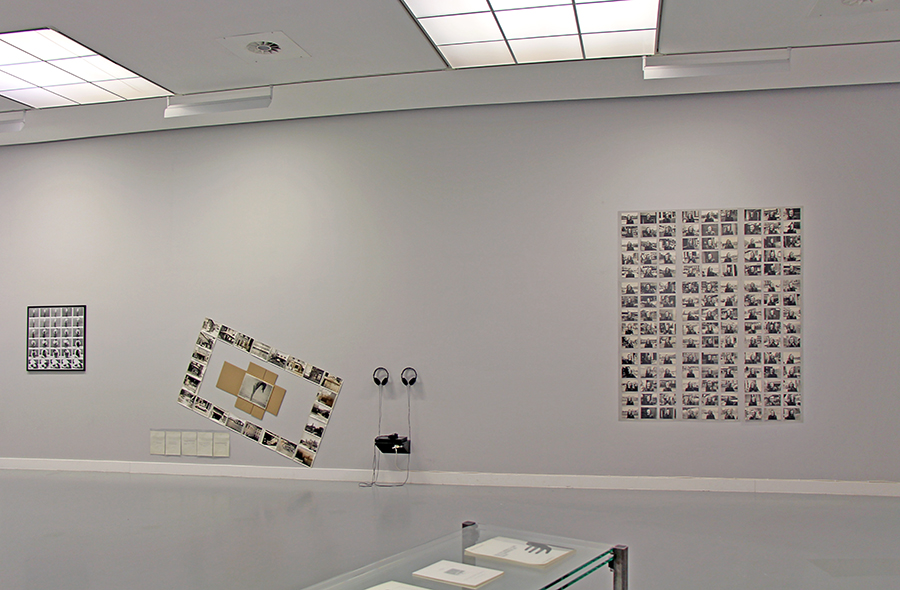Aglaia Konrad
Undecided frames, 2016 (Carrara, 2010)
colors photography, 41 x 54 cm. Ed 3/3 + 2 ep.a.
Suchan Kinoshita
Isofollies, 2007-2017
Mixed media (wrape, plastic, oil), variable dimensions
Installation in Köln, museum Ludwig, exhibition “Suchan Kinoshita, In ten Minuten”
For its tenth participation at Arco Madrid, the Nadja Vilenne Gallery has chosen to present the work of two artists, Suchan Kinoshita and Aglaia Konrad. The dialogue between these two artists over the years has yielded a singular resonance between their works.
1.
For more than twenty years, Aglaia Konrad has tirelessly observed, investigated and translated the city and it urbanity, this global metropolis, be it Beijing or São Paulo, Cairo, Dakar or Chicago. She analyses the sociological field, the socio-political parameters; she focuses her attention on the generic modernity and genealogy of concrete architectures. Her work, inscribed in the very heart of the metropolis, senses and teases out its drives. And, sometimes, it also distances itself from that core, the better to understand its knots of its circulation, its expansion, the access into it, its relation to the landscape. Over the course of her travels, Aglaia Konrad has amassed a vast body of images that answer to the standards of the documentary. And that body is an indexed trace of the real constituted out of an infinity of reproducible images. That said, none of the images in it has a specific support, a fixed surface, at the outset, none claims for itself, a priori, any canon of the photographic art as usually codified. The mobilized image could become a traditional black-and-white photograph, a simple inkjet scan, a digital photocopy, part of a slide projection, a colour negative print, or be enlarged to the size of the exhibition space. Or it could be the object of books and other publications. It all depends. Each of the images Aglaia Konrad archives stems from a double perspective: all are a recording of the real, and all will reveal their subjective and critical potential once they have been activated. Their discursive power just as much as their scenography are what establish the very bases for the relation between the image and the viewer.
The series Undecided Frames was born – paradoxically – precisely at a moment when she had to decide a specific and contextual use for the images. Immersed in her subject, Aglaia Konrad takes multiple shots, and some are nearly identical – they are so similar, and yet so singular, that the artist remains undecided as to which one to choose from the archive. Hence the – courageous – idea not to choose between two similar shots, an idea that, ipso facto, becomes a decision to confront the two shots, to juxtapose them in the same frame, in which the two photographs are separated by a thin passé-partout. The new image thus composed is called Undecided Frame.
From Mexico to Créteil, from Tokyo to Chicago, from Carrara to the Grande Dixence Dam, we slip quite naturally into playing the game of spotting the differences, of noticing, in the images placed side by side, a shift in the angle, a difference in the depth of field, the disappearance, or appearance, of certain details. ‘In Time, the same object is not the same after a one-second interval’, says Duchamp. In Note no. 7, Duchamp evokes the difference between ‘semblance/similarity’, and a bit further on he adds: ‘there is a crude conception of the déjà vu that leads from a generic grouping (two trees, two boats) to the most identical “castings.” It would be better to try to go into the infra-thin interval that separates two “identicals” than to conveniently accept the verbal generalization that makes two twins look like two drops of water’.1 What Duchamp is discussing in this passage is his work on the infra-thin, and Aglaia Konrad’s Undecided Frames bear a singularly close kinship to that. With her non-choice, she opens the perceptive field while our gaze follows the displacement of the lens, however ‘thin’ it might be. The point here isn’t to come as close as possible to the threshold of the perceptible, or of the singularization between two images, but to open up an expanded field. ‘With each fraction of duration’, Thierry Davila observes, speaking of Duchamp’s infra-thin, ‘all future and past fractions are reproduced. All these past and future fractions coexist in a present that is already no longer what we ordinarily call the present instant, but a sort of present with multiple extensions. It is in these multiple extensions of time that the subject addressed here circulates, it is in their incessant activation that it finds the means for a renewed plasticity’.2 Indeed, from one image to the other, in the case of Aglaia Konrad’s photographs, we find ourselves not only facing the same object or subject, though our perception of it is different, we also find ourselves confronted by different objects or subjects, if nothing else because of the time interval that exists between the two shots. This renewed, increased even, plasticity resides in the infra-thin that separates the two shots placed side by side. We are not in fact looking at two juxtaposed photographs but at one image, composed of two shots. And this dialectic of semblance and difference sharpens our perception of the real. The repetition of this same deferred action becomes an imbricated repetition. The reprise, by the infinitesimal difference at the heart of the logic of the same, impacts our perception of the real.
2.
Suchan Kinoshita’s Isofollies (2007) is an installation composed of fourteen strange meteorites or asteroids, their composition unknown. Bulbous masses, varied and singular volumes, these megaliths act like monumental scoria: they are petrified bundles. A first series of these sculptures appeared in 2006. In the exhibition space itself, in the basement and the attic of the gallery where she was showing, the artist gathered, serialized, and bundled up all manner of objects – waste, in fact, those things that over time had been abandoned, had stopped being useful. With these, she composed bundles of varying sizes; she mummified the scrap, literally and figuratively, by packing it using long strips of industrial plastic, elastic and black, and then rolling the resulting bundles on the floor, compressing them and thus compacting the fossilized waste. What is petrified here is the time of the place, its history. The eleven aeroliths that compose the work were distributed in the exhibition space like a constellation.3 In 2007, during a solo show at the Ikon Gallery in Birmingham, three new aeroliths appeared, and from that moment on the work took on the name Isofollies, after the plastic wrap used to make it. At the Ikon Gallery, she used the residues from the installation process of her show. The first ensemble of these sculptures thus became a delocalized principle.
Suchan Kinoshita was invited to the 8th Sharjah Biennial, in the United Arab Emirates, in April 2007. With its unbridled consumerism, its artificial islands, its ostentatious luxury towers, its ‘green’ desalination plants and its suburbs carved onto the desert sands, the United Arab Emirates are a nightmare for environmentalists. And that was precisely the problem that the artistic directors of the Biennial decided to address: Still Life, Art, Ecology and Political Change is inscribed in an urgent and ongoing research process whose goal is to highlight the renewed role that art can play in the resolution of a large panoply of questions that have a direct, and alarming, effect on life as we know it. It was about addressing the social, political and environmental challenges raised by excessive development and the ever-increasing depletion of natural resources. Naturally, against this background, Suchan Kinoshita decided to the produce a third set of her Isofollies. This new constellation was, like the other ones, produced in-situ, with waste and scraps found on the spot. Born in a domestic context, the compressed time of a place, a recycling of the lived experience of its successive inhabitants, at the Sharjah Biennial the very principle of the work took on a heightened, and in some ways planetary, meaning.
These successive constellations act like a space of thought with a variable geometry, from the singular to the more universal: Suchan Kinoshita buried the waste of a household, then the residues produced by the mounting of an exhibition, and lastly the condensed extracts of the waste of a megalopolis. In a fourth version of the work, from 2014, she buried the personal objects and souvenirs of a person who had died, traces of memories that in her work found a new vitality, at once abstract and universal. Nothing in Suchan Kinoshita’s work is ever fixed. Her shift-shaping work is always in progress, always being transformed in light of accumulated experiences. The artist always treats every exhibition like a fragment of a whole whose limits, and ends, are outside of her control. The works are linked by the will of the artist, but they are also enriched by unforeseen connotations and can be read differently depending on their context. It is interesting, in this regard, to consider the various moments and places where the constellation conceived for the Sharjah Biennial has reappeared. In this exhibition devoted to the ‘career of the spectator’ (2009), certainly a full-time job, the fourteen elements of the Isofollies were placed in counterpoint to a monumental green velvet curtain upon which a spotlight projected the luminous halo of a projector and behind which a disco ball turned slowly on its axis. In this relation between the telluric and the aerial, the installation evokes a conjunction of elements that refer to the universe of René Magritte and his mysteries. Placed under the archways of the Pavillon de l’Horloge, the eastern entrance to the Cour Carrée of the Louvre in Paris, the Isofollies operated like a mineral chaos amidst the classical layout of the fluting columns erected by the architect Jacques Lemercier in the seventeenth century. For her exhibition In Ten Minuten (time is an essential parameter of this artist’s work), at the Ludwig Museum in Cologne (2010), she placed the Isofollies in relation to another work, Engawa, a pontoon made of meranti wood cut into thin parquet slats, and dotted here and there by coloured lines and small yellow, blue and red squares, and punctuated by the stilts that both support the structure and overshoot it in places. In traditional Japanese architecture, the engawa is a raised wooden walkway that surrounds the house, almost like a porch. It’s a passageway, covered by a slanted roof. The engawa mediates the relation between inside and outside. It’s a place to stand, to sit down and contemplate the garden or landscape, to meditate. In this case, a place to face the field of aeroliths so reminiscent of the total sparseness of the Japanese garden. The Sakuteiki, the oldest Japanese book about gardening, opens with the title ‘The Art of Setting Stones’. In 2011, for her show The Right Moment at the Wrong Place, at the Museum De Paviljoens, in Almere, the Netherlands, she concentrated the Isofollies into a narrow and dark enclave, a return to the obscure chaos of its origins. Finally, during the exhibition Tussenbeelden at the Schunck* (Heerlen, 2014), curator Paul Van der Eerden compared the Isofollies to the Bolis – reliquary manifestations of the vital force whose primary function is to accumulate and control the force of natural life of the Bambara people in West Africa. The Bolis contain a variety of elements, their surface is constantly impregnated by layers and layers of libations. For the initiated, the Boli is a presence that transcends the object itself; a real object in a real space, it occupies also a mental space in the memory of the community.
3.
This time, the Sharjah Isofollies are made to resonate with the work of Aglaia Konrad. And the dialogue between the work of these two artists goes well beyond the fact that Suchan Kinoshita’s Isofollies are composed of the waste produced by a megalopolis, and the fact that the megalopolis is one of the main subjects of observation and reflection of and in Aglaia Konrad’s work. In 2007, Aglaia Konrad inaugurated a vast cycle of works – Shaping Stones and Concrete & Samples – that focus on architectures with sculptural forms. In Sculpture House, Konrad turned her attention to the first Belgian house built in shotcrete (by the architect Jacques Gillet, between 1967 and 1968). The work is the result of her research and exploration of the synthesis between the functional and aesthetic dimensions of the house’s architecture: it is composed of concrete sails that offer a multiplicity of points of view that could not have been captured with a single shot. That being so, the artist reveals to us this veritable sculpture through slow travelling shots in which the concrete appears as an organic force, and the house as perfectly integrated into the surrounding nature and foliage, with the interior extending outwards and vice versa. Konrad subsequently filmed the Church of the Holy Trinity, the expressionist masterpiece of Austrian artist Fritz Wotruba (1907-1975), in all of its brutalist power. Guided by his tectonic approach to stone sculpture, Wotruba’s monumental construction in Vienna piles and dovetails gigantic concrete blocks. Aglaia Konrad’s camera becomes the best witness of a spiritual architecture, unified in its chaos, whose primitive and atemporal image is reminiscent of the sacred megaliths at Stonehenge. With Concrete & Samples II: Blockhaus, she did the same with the Church of Sainte-Bernadette du Banlay, in Nevers. Conceived by Claude Parent and Paul Virilio, this monolithic, enigmatic structure appears like a bunker in béton brut. These studies eventually lead Aglaia Konrad to the quarries of Carrara, where she photographed and filmed the mineral landscape, the marble mountains, a landscape, constantly in transformation, that seems to have been sculpted, something like a hollow sculpture out of which have been extracted, over time, the innumerable masterpieces that punctuate the history of architecture and sculpture. In her more recent work, Konrad has created a lapidarium of construction debris; and she has, at the same time, indexed the upright stones of the Neolithic cromlech at Avebury in prints on baryta paper. Monoliths, megaliths, the tectonic force of béton brut, organic or brutalist architecture, stone and sculpture – all of this confronts us with the relation between nature and culture, the mineral kingdom and the dynamism of the living, the chaos of origins and the construction of the world. ‘Before the earth and the sea and the all-encompassing heaven / came into being, the whole of nature displayed but a single / face, which men have called Chaos; a crude unstructured mass / nothing but weight without motion, a general conglomeration / of matter composed of disparate, incompatible elements’.4 So writes Ovid in his Metamorphoses. Suchan Kinhoshita’s Isofollies evoke the same things: the chaos of origins, the power of the mineral, a petrifying inertia, the dynamism of the living, the megalith and the sculpture, recycling and metamorphosis, cosmogony, the constellation and the song of the universe, primordial forces and the excessive overabundance – unbridled and disquieting – of the world today, the world that she recycles and reorganizes like one of the Titanides or, better yet, like Sisyphus himself.
4.
In this new part of the Undecided Frames series, we should note the aerial views, of the Gobi Desert or Siberia, that attest to human organization; the metal weatherboardings that seem to struggle to constrain this tower in Mexico, before which the passing carts of green plants seem all the more flimsy; the urban views of Tokyo, Chicago or Hong Kong, their images so similar and yet so different; the mighty force of the Grande Dixence Dam, in the Valais, whose interior architecture seems to rival the stacking and dovetailing of monoliths in Fritz Wotruba’s church in Vienna. The movement of the lens before the dam gives this thing that harbors all the forces of nature an even greater dynamism. We should note as well the stained glass doors and mirrors photographed in Porto. In all of these, Aglaia Konrad seems to be searching out the thresholds of the singularities that differentiate two quasi-identical shots. There is the lapidarium of the archeological museum in Cologne, there is of course Carrara, nor should we forget the brutalist cylindrical towers, built by Gérard Grandval, known as the Choux de Créteil, or Créteil Cabbage. The very name of these concrete towers, we note in concluding, refers us to nature.
Jean Michel Botquin
1 Marcel Duchamp, Duchamp du Signe, suivi de Notes, eds. Michel Sanouillet and Paul Matisse (Paris: Flammarion, 2008), p. 290.
2 Thierry Davila, De l’Inframince. Brève histoire de l’imperceptible de Marcel Duchamp à nos jours (Paris: Editions du Regard, 2010)
3 Suchan Kinoshita, yukkurikosso yoi, at Nadja Vilenne Gallery, Liège, 2006. Collection Bonnefantenmuseum, Maastricht.
4 Ovid, Metamorphoses, trans. Davide Raeburn (London: Penguin Books, 2004), I. 4-9.
[sociallinkz]
